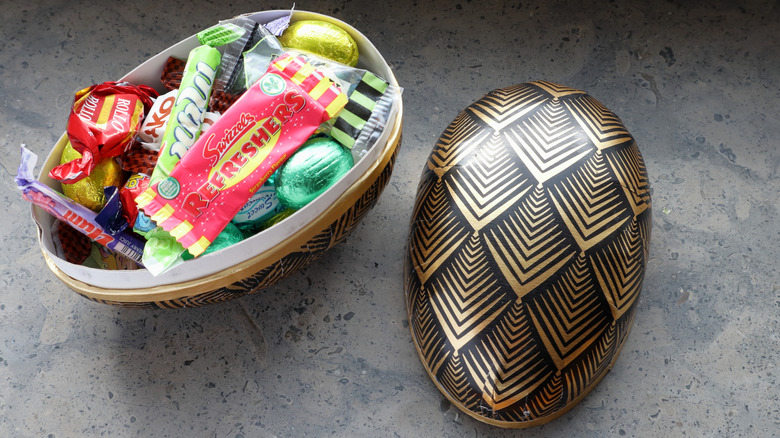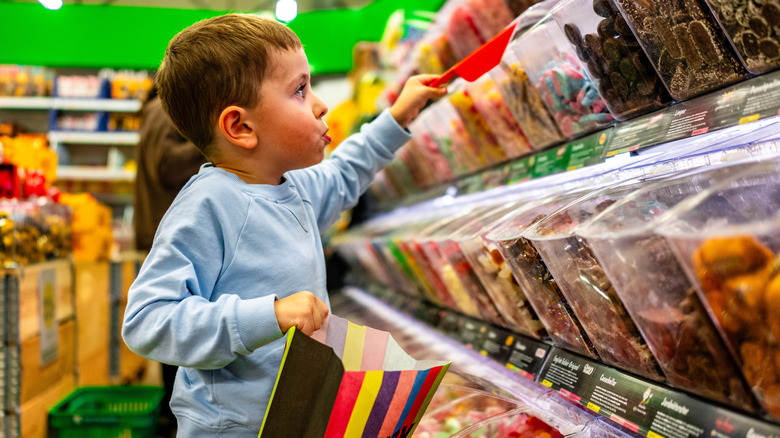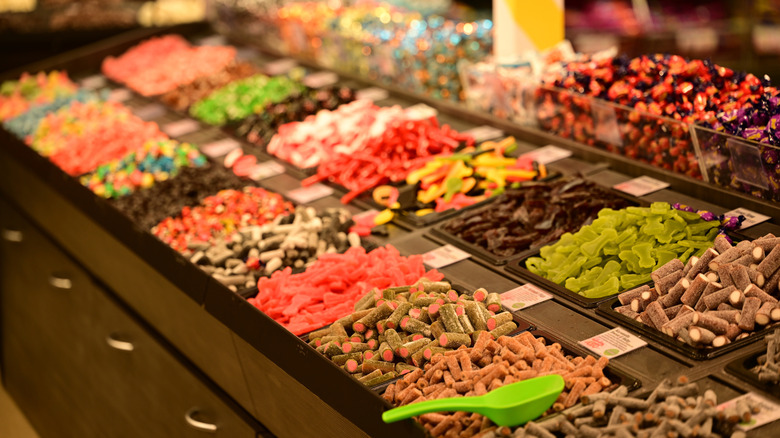What Makes Swedish Candy So Good?
We may receive a commission on purchases made from links.
Sorry American candy, but your sweet days are over. Swedish candy, known as "svenskt godis," has infatuated candy-lovers around the world. Its sudden rise to fame was most likely caused by TikTok influencers (who else?) who began doing taste tests and hauls of their favorite Nordic treats on camera. This goes way beyond Swedish Fish, although those classic gummies were definitely a gateway candy when they landed here in the mid-20th century. We also have IKEA to thank, with its focus on bringing the Swedish lifestyle to our dull, suburban lives. Lingonberry-flavored treats and sour foam candy, along with those famous frozen meatballs, began expanding the American palate upon arrival.
But what makes these particular Swedish candies so much better than our Sour Patch Kids? To start, high-quality, often natural ingredients with unique flavor profiles that range from salted licorice to chewy toffees to fruity gummies. While American tastes tend to stick to chocolate, caramel, or one-note fruity flavors, the Swedes focus on more natural, nuanced flavors and richer, more fulfilling flavor profiles. Swedish candy culture also plays a part. In short, candy is a Big Deal there. According to a study by the Swedish Board of Agriculture, Swedes eat more candy per year per capita than the citizens of any other nation. In fact, it's so special that they dedicate every Saturday to buying and eating candy in a tradition called lördagsgodis, which means "Saturday candy." When eating candy is practically a national holiday, it only makes sense to produce the very best.
Swedish vs American candy
In contrast, American candy producers love to cut corners when it comes to flavors. Artificial flavorings, dyes, and high levels of corn syrup make up most of the candy found in any U.S. store aisle. This makes most of our candies too sweet, too homogenous, and, for some, even sick-making. When our cherry Jolly Ranchers and Fruit Roll-Ups contain all kinds of dyes and additives that are actually banned in the E.U., it makes sense that the higher standards for ingredients overseas simply leads to better candy.
Additionally, Swedish brands focus on using real fruit extracts, fewer artificial additives, and higher cocoa content in chocolates. Cultural differences are also to blame, as Swedes view candy as a special treat, with a higher price point that leads to it being enjoyed more mindfully and moderately. Swedish candy culture also encourages variety, as their shops showcase their wares in a pick-and-mix (lösgodis) system. Even gas stations and corner stores boast incredible displays of loose candy, allowing you to customize your candy experience, rather than having to stick to just one flavor or style of prepackaged candy. Contrast that with the United States, where candy is marketed as an everyday snack, diminishing its celebratory and indulgent aspect.
Where and what kind of Swedish candy to buy
Luckily, you don't have to travel to Stockholm to stock up on this superior candy. The Swedish treat has gone so viral that there are actually candy stores in the U.S. dedicated to just this one country's sweet tooth. If you're in New York, check out Bon Bon or Sockerbit, which boasts "imported Scandinavian candy made with quality, non-GMO ingredients and free from high fructose corn syrup, trans fats and Red 40."
If you're patient, you can buy most of these colorful concoctions online, but be prepared for a longer shipping period, as the candy craze has created quite a backlog. Check out popular Swedish candy brands like Marabou, Ahlgrens Bilar, or Bubs, which offer everything from rich chocolates to sour gummies and marshmallow treats. The challenge, of course, will be maintaining the Swedish tradition of only eating the precious candy on Saturdays. Perhaps once you taste the difference (and notice the higher price point), you'll feel more inclined to truly savor the intricacies of a superior Sour Strawberry Log or Blue Raspberry Bon Bons.


